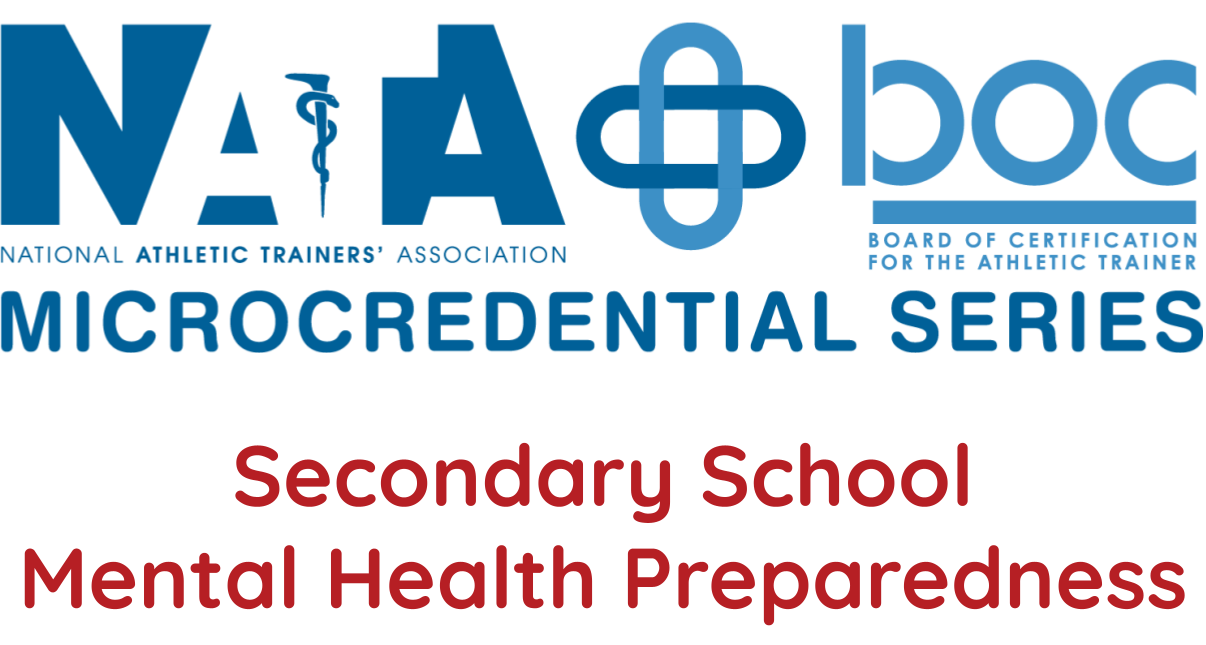
Student Perceptions of Merged Anatomy, Evaluation and Rehabilitation Courses
This session is featured as part of the VATEC 2024 Highlight Reel, showcasing the most impactful presentations from the 2024 Virtual Athletic Training Educators’ Conference.
Abstract:
Traditional anatomy, evaluation and rehabilitation courses are administered to athletic training students as independent courses throughout their academic program, requiring instructors to review concepts and theories from previous courses before introducing new content. To mitigate this and attempt to ensure congruency and complete comprehension of course content, investigators created a merged anatomy, evaluation and rehabilitation course that presents required material by anatomical region. The merged courses are divided into three, semester-long courses that focus on lower-extremity, upper-extremity and spine and pelvis. In this design, athletic training students are first taught the anatomy of a structure and how to evaluate the potential injuries to that structure and proper rehabilitation protocols for return to participation. Course assessment included both written and practical examinations. Practical examinations included patient simulations where students are required to utilize their knowledge of anatomy to correctly evaluate and diagnose the patient and then prepare goals and specific exercises for each phase of the patient’s rehabilitation to return the patient to participation. Thus, the student is required to use all aspects of the course content in the practical assessment. The purpose of this study was to identify and measure athletic training students’ perceptions of the merged course and whether they felt it prepared them for real-life clinical experiences. Overall student perceptions of satisfaction, comprehension of course content and preparation for real-life patient care shows that it may be beneficial for instructors in MSAT programs to adopt this merged method of teaching anatomy, evaluation and rehabilitation. The opportunity to deliver all the content for a particular anatomical region concurrently could improve student comprehension, retention and enjoyment of the content more so than if each were taught independently. Additionally, the added benefit of learning all skills for the region could improve the applicability and confidence for clinical skills.
Learning Objectives:
- Understand our methods in creating and implementing a merged anatomy, evaluation, and rehabilitation course.
- Identify data from alumni and current students on their perceptions and experiences taking the merged courses.
- Evaluate if they should/could adopt this type of merged course in their AT programs.
Level:
Advanced
Domain(s):
Domain 2: Assessment Evaluation and Diagnosis
Domain 4: Therapeutic Intervention
CEUs:
0.5 Category A
Track: Pedagogy
Format: Lecture
Expiration:
In order to earn your CEUs for the VATEC Highlight Reel sessions, you must watch the video in its entirety and complete the assessment by December 31, 2025 at 11:59 p.m. CDT.
Brittany Clason, EdD, ATC
Dr. Brittany A. Clason has been in athletic training education for 14 years. She currently serves as the Program Director for the Master of Science in Athletic Training Program at California State University, Fresno. Prior to her role as program director, she served as the program’s Coordinator of Clinical Education.
Before starting her career in education, Dr. Clason practiced as an athletic trainer in the secondary school setting in Central California. Dr. Clason’s contemporary expertise is in emergency medicine and acute care of catastrophic injuries and illnesses. Her current research primarily focuses on improving student academic performance and success through psychosocial variables, such as motivation, identity, and self-efficacy.
Nicholas Wright, PhD, ATC, SFMA-1
Dr. Nicholas Wright graduated with his Ph.D. in Health Science (Athletic Training) from Rocky Mountain University of Health Professions in the summer of 2023. Later that summer, Dr. Wright then accepted a position as a full-time lecturer at California State University, Fresno teaching in the MSAT program. Dr. Wright has a passion for athletic training and loves the opportunity to teach the next wave of clinicians and help them succeed in their goals as they enter this amazing profession. Dr. Wright's teaching and research interests include: Concussions, mild traumatic brain injuries, Research Methods, Evaluation techniques, Athletic Training and rehabilitation Science, Movement Assessments, & Athletic Training education, pedagogy, and success.
Prior to working in education, Dr. Wright worked as the Assistant Athletic Trainer at Jessup University for 5 years and has worked a myriad of other job settings and PRN work for entities like: US Quidditch, USA Track and Field, Sacramento Republic, Sacramento Gold, Sacramento Running Association, and Shasta Orthopedics.
When not working, you can find Dr. Wright chasing around his 3 kids (all under the age of 5), golfing, biking, and/or watching his beloved bay area sports teams (Go Niners, Sharks, & Giants!!!)

